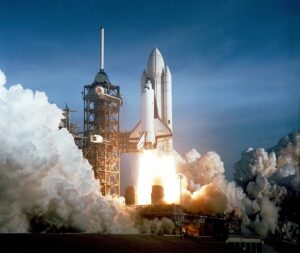Change without end

The United Nations declared April 12 as the International Day of Human Space Flight. On April 12, 1961, Yuri Gagarin became the first human in space. And on April 12, 1981, 20 years later, the first American space shuttle Columbia was launched. It’s a good day to make an overview of the current trends in space in general.
- In space, the competition between nations is still very important. Today it is not just about the race between the United States and Russia. All countries today see space as an essential part of the national infrastructure and as an important showcase. Everyone now suspects that China and India have become important space nations. Fewer people realise however that countries such as Vietnam, Indonesia and Nigeria already belong to the league of space nations since more than a decade now.
- Another trend that continues unabated is the search for periodically recurring cash flows and the evolution towards downstream applications and services, in communication as well as in navigation and Earth observation.
- On the upstream side, space technology is evolving in a different direction from aviation technology. While aviation technology is very conservative for understandable reasons, space technology takes a little more, albeit calculated, risk. Customisation with very high quality assurance (QA) costs and low production runs is increasingly making way for modular design with modest QA and larger production runs. In recent years, the supply side of launch capacity has progressed a lot. Technological progress on the upstream side leads to a multiplication of activity on the downstream side.
- Satellite communications are increasingly using low-altitude – low ‘latency’ (delay) orbits to support high-speed Internet traffic. Geostationary satellites are now complemented by large constellations of Mid Earth Orbit (eg O3B mPower) and Low Earth Orbit (eg OneWeb) satellites.
- Space can increasingly attract venture capital and the rise of the tycoons (Elon Musk, Jeff Bezos, ..) is not unimportant in that regard. Their spectacular investments in satellite constellations, rocket launches and tourist spaceflights have created a new space hype that fosters a favourable investment climate.
- The new applications and services made possible by space support the data revolution. We now have huge amounts of data we still need to process and protect. Data analytics, cybersecurity and artificial intelligence are domains that are mutually reinforcing through space activities. In a few years we may have optical satellite communications with distribution of quantum encryption keys.
- Society is discovering the positive impact of a sound space economy. Sustainable development goals can be pursued with space. Space appeals to the imagination and can appeal to young people to dare to take up a STEM education. Politicians recognise the positive leverage effect of space investments. Space start ups play a role in regional development.
- In that context, there is also a growing interest in pushing the limits of human ability. The moon and the planet Mars should receive a visit from Earth soon, perhaps even before the middle of this century.
Let’s just hope that our presence in space is allowed to take on an ecological and sustainable character. A good visitor leaves his stay in a respectful way.
(Picture from shutterstock.com)

